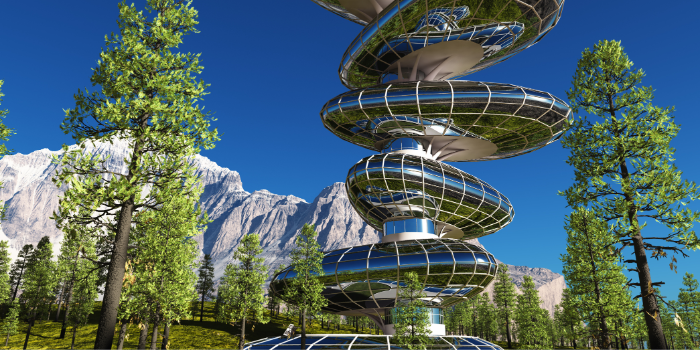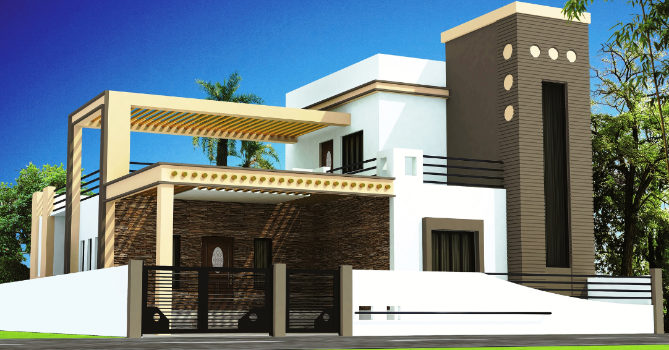
Designing with the Climate in Mind: Architecture's New Era
Imagine you’re building a house. Now, think about how the weather outside would influence the design of your home. Would it have big windows to catch the breeze in a hot climate? Or, would it be snug and tight to keep out the cold? This is exactly how climatology steers architecture. It’s not just about making buildings look good; it’s about making them live in harmony with nature.
Today, we’re seeing a huge shift. Architects aren’t just thinking about today’s weather; they’re planning for the future’s climate changes too. It’s a big deal because our buildings and cities play a huge part in how we tackle climate change. They can either be part of the problem or part of the solution.
This is where the magic happens. Using smart design and new materials, buildings can now adapt to the weather, cut down on energy use, and even give back to the environment. Imagine buildings that breathe, gardens that grow on walls, and roofs that collect rainwater to use. It's not science fiction—it's the future of architecture.
We’re not just talking about “green” buildings. We’re moving towards regenerative architecture. That means creating spaces that do more good than harm to the environment. It’s a journey from causing less bad to doing more good.
In this blog, we’ll explore how climatology is reshaping the way we think about architecture. From the tools and technologies making it possible to the global efforts that inspire change. Let’s dive into a future where buildings work with the weather, not against it.
Think of technology in architecture like a superhero team. Each hero has a special power, from smart software that helps design buildings to machines that make construction faster and less wasteful. Together, they're changing the game in making buildings more friendly to our planet.
First up, we have Building Information Modeling, or BIM for short. It's like the brainy planner of the group. BIM lets architects create digital models of a building before it's even built. This isn't just any model; it's a super-detailed one that shows everything from how the building will look to how it will use energy. It helps everyone involved in making a building work together better and cuts down on mistakes and waste.
Then there's AI—our tech wizard. AI can sift through tons of data to pick the best materials for the job, making sure they're both good for the environment and strong enough to last. It can also figure out the smartest way to use these materials, so nothing goes to waste. Plus, it keeps an eye on how the building is doing once it's up, making sure it's as green and comfy as possible.
And let's not forget about the innovations in materials and construction methods. We're talking about making buildings out of stuff that either comes straight from nature or can go back to it without harming the planet. Also, there are new ways to put buildings together, like using prefabricated parts. This means less time building on-site, which means less mess and less harm to the environment.
Together, these technologies are not just about building smarter; they're about building in a way that's better for the world. They're helping us make places to live and work that don't just take from the earth but give back too.
Moving from sustainable to regenerative architecture is like upgrading from recycling to actually healing the planet. Sustainable architecture focuses on not harming the earth, which is great. But regenerative architecture takes it a step further. It’s about buildings that help the environment heal and grow stronger.
Here’s how it works: Imagine a building that doesn’t just sit there. Instead, it cleans the air, produces more energy than it uses, and even helps local wildlife thrive. It’s like each building is a mini park, contributing positively to its surroundings.
Regenerative architecture is about working with nature, not just alongside it. Buildings are designed to mimic natural processes. For example, they might use rainwater to grow plants that cool the building down, cutting the need for air conditioning. Or, they might be designed to get the best light and heat from the sun, reducing the need for artificial heating and lighting.

The cool part is, this isn’t just a dream. There are real projects out there proving it’s possible. Buildings and even whole neighborhoods are being designed this way, turning areas that were once just consuming resources into places that give back—cleaning water, purifying air, and supporting local ecosystems.
The shift towards regenerative architecture is a big deal. It’s architects saying, “Let’s do more than just less harm. Let’s actually make things better.” It’s a hopeful vision for the future, where buildings aren’t just less of a burden on the planet, but a boon to it.
In a world facing climate change and environmental degradation, this is a bold step forward. It’s about healing and contributing, turning our living spaces into sources of life and renewal. That’s the future regenerative architecture is striving for.
In the world of building and design, new materials and construction methods are popping up like mushrooms after rain. They're not just cool; they're making buildings better friends with our planet.
Let's talk about materials first. Imagine using stuff that actually helps the environment. There are now materials that can clean the air, absorb CO2, and even grow plants on building facades. Some materials are made from recycled waste, turning trash into treasure. It’s like giving materials a second chance at life, and at the same time, making our buildings greener.

Now, onto construction methods. Prefabrication is a big word that basically means building parts of a building somewhere else, then bringing them to the site to put them together. It's like a giant puzzle. This method is super smart because it reduces waste, cuts down on construction time, and causes less disturbance to the environment. And then there’s 3D printing buildings with materials that can be recycled. Yes, 3D printing! It’s like drawing a building with a giant pen, layer by layer. This isn’t just fast; it’s also really efficient, cutting down on the amount of material wasted.
These innovations are more than just new tricks. They’re changing the game for how we think about building. By using smarter materials and building in smarter ways, we're stepping up our game in taking care of our planet. It's all about building today for a better tomorrow.
One standout example is the Eden Project in the UK. It's not just a visitor attraction; it's a giant greenhouse complex that mimics different climate conditions. This project shows how architecture can work with nature to educate and inspire, all while maintaining a low environmental footprint.
Then there's the Bullitt Center in Seattle, dubbed the "greenest commercial building in the world." It's designed to be completely self-sufficient, generating its own electricity and water. It pushes the envelope on how urban buildings can reduce their ecological impact and still provide a modern, functional space for businesses.
In India, the push for green buildings has taken off in recent years. With projects receiving LEED and GRIHA certifications, India is making a significant mark on the green building map. Notably, India ranked second in the U.S. Green Building Council’s Top 10 Countries for LEED certification. This achievement highlights the country’s growing commitment to sustainable construction and design practices.
These examples are just the tip of the iceberg. Across the world, from Paris's urban farms to Singapore's garden skyscrapers, architects are blending design with sustainability. They're proving that buildings can be part of the solution to environmental challenges. These global efforts are not just about making a statement; they're about making a difference, showing that sustainable and regenerative architecture can and is being realized across the globe.
The future of architecture shines brightly with sustainability and adaptability at its core. Imagine buildings that change with the seasons, smart homes that reduce energy use, and cities that breathe life into their surroundings. This future is not just a dream. It's being built today, with every architect who chooses a solar panel over a traditional roof or a rain garden instead of a concrete slab.
As we face climate change head-on, this adaptive approach isn't just nice to have; it's a must. Buildings that can stand up to storms, heatwaves, and more, all while nurturing the environment, are the way forward. This vision of architecture doesn’t just solve today’s problems but prepares us for tomorrow’s challenges, ensuring a world where humans and nature thrive together. It's a promise of a home for future generations that's both safe and beautiful.
Let's build a greener future together! Whether you’re an architect, student, or just someone who loves our planet, every small change counts. Start by sharing this vision, implementing sustainable practices in your own space, or supporting green architecture in your community. Let’s make the promise of a sustainable world a reality, one building at a time.